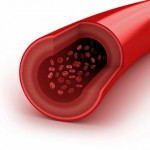Nimodipine (Nimotop) is …

Nimodipine may be able to increase cerebral blood vessel flow – a key problem for some ME/CFS and POTS patients
a calcium channel blocker and vasodilator that been available in the U.S. for over 30 years, and can be found in over 60 countries world-wide.
Nimodipine is mostly used to suppress blood vessel spasms that can occur during cerebral hemorrhaging and vascular ischemia. It’s ability to increase blood flows in the brain (cerebral perfusion) could be helpful in ME/CFS and POTS given increasing evidence of reduced brain blood flows and possibly vasoconstricted cerebral blood vessels.
As Susan Parker points out, Nimodipine is able to easily cross over into the brain, and because it effects the arteries in the brain more than the rest of the body, is unlikely to cause blood pressure issues.
Nimodipine may also be able to regulate immune functioning, enhance mitochrondrial activity, reduce pain, and inhibit the activity of the microglial cells in the brain that are believed to be causing neuroinflammation in ME/CFS and fibromyalgia.
ME/CFS and FM Doctors Report
Dr. Jay Goldstein rated Nimodipine the third most effective of 23 medications for ME/CFS. Dr. Mason Brown, a U.K. doctor, developed a protocol for ME/CFS – of which Nimodipine was the cornerstone – which he claimed was effective in 80% of his patients.
- Dr. Jay Goldstein – the top 23 drugs for chronic fatigue syndrome (ME/CFS)
One of those was Dr. Kristina Downing-Orr, a psychologist who recovered from a very severe case of ME/CFS. Downing-Orr later wrote a book “Beating Chronic Fatigue Syndrome” outlining Dr. Brown’s protocol (as well as a nutritional protocol).
Brown and Downing-Orr use Nimodipine to remove brain toxins (neurotoxins) they believed built up over the course of the disease. Gingko biloba, eight glasses of filtered water a day, L-Glutamine and evening primrose oil are used in conjunction with Nimodipine to improve brain circulation.
They also used strategies to assist with detoxification, repair the gut, assist the mitochondria, etc. Downing-Orr reported that the healing process was a gradual one, that periods of worsened health could be expected as the toxins were released, and that it would take from one to two years.
Parker lists fast and slow Nimodipine protocols for ME/CFS. Downing-Orr, who emphasizes that the drug may make you feel worse before you feel better, recommends a slow approach that begins with one quarter tablet a day for a week, adds another quarter tablet in the afternoon and slowly working its way up to one tablet total a day by week four. Some patients may need to start lower. Parker reported that some people with ME/CFS may not tolerate even the smallest doses.
Downing-Orr reports that some patients may also need up to two to four tablets a day for a month or more (4-5 months at the most). Bear in mind that both Brown and Downing-Orr considered Nimodipine as one part of a step-by-step multidimensional protocol. Find out more about their protocols here:
Dr. Marilyn McNeil reported to the British Medical Journal article that small doses of Nimodopine (she never took more than 1 1/4 tablets (37.5 mgs daily) allowed her to rapidly recover from a severe case of ME/CFS which left her bed-ridden. Parker provides several success stories including that of a Toronto doctor, Dr. Sherkey, who reported that one patient, after eight years with ME/CFS, remained almost symptom-free two years after starting Nimodipine.
Parker, herself, was mostly housebound, before recovering 80% of her health using Nimodipine in combination with other treatments. in 2014 she reported that she can now walk 6 miles a day, and run and dance. Seven years after starting the drug she stated that she needed to remain on the drug (45 mg/day) to maintain her health.
Finish author and ME/CFS patient Maija Haavisto reported that Nimodipine markedly improved her brain fog, and put it on her ‘definitely try’ for ME/CFS list. Remy in a major overview of the drug reported that Nimodipine markedly reduced her pain.
A Calcium Channel Blocker for ME/CFS and Fibromyalgia? Nimodipine Pt. II
As with every ME/CFS/FM treatment responses to the drug are very variable. Some doctors have not had much success with it. Parker reported that Dr. Mason Brown found that “Nimodipine helps twenty percent [of ME/CFS patients] very quickly, another twenty per cent over six months, and all others to varying degrees over a period of time.” Dr. Shepard recommended that the drug be used with care and advises that anecdotal reports have been mixed.
Susan Parker reports on the effects of other calcium channel blockers in ME/CFS and doctor’s experiences with Nimodipine and the various Nimodipine protocols used in ME/CFS here.
Patient access to the drug is limited by practitioners who are reluctant to try it, and it’s cost – currently about $3-500/month in the U.S. right now. You can find some UK and U.S. doctors who’ve used Nimodipine to treat ME/CFS in Susan Parker’s overview.
For a list of drug interactions and detailed protocol recommendations check out Susan Parker’s downloadable overview.
Resources
- Nimodipine use in M.E. / CFS: A comprehensive guide by Susan Parker – Free 34 page pdf
- The Nimodipine Way? A Review of “Beating Chronic Fatigue: Your Step-by-Step Guide to Complete Recovery”
- A Calcium Channel Blocker for ME/CFS and Fibromyalgia? Nimodipine Pt. II




